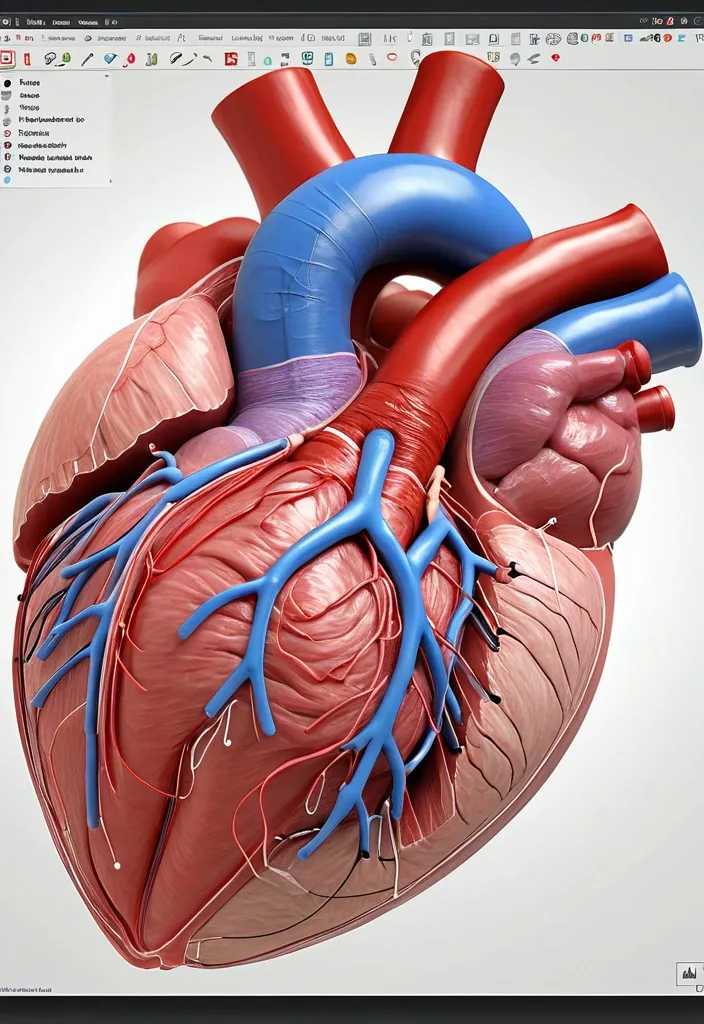Search Results for example
Explore AI generated designs, images, art and prompts by top community artists and designers.
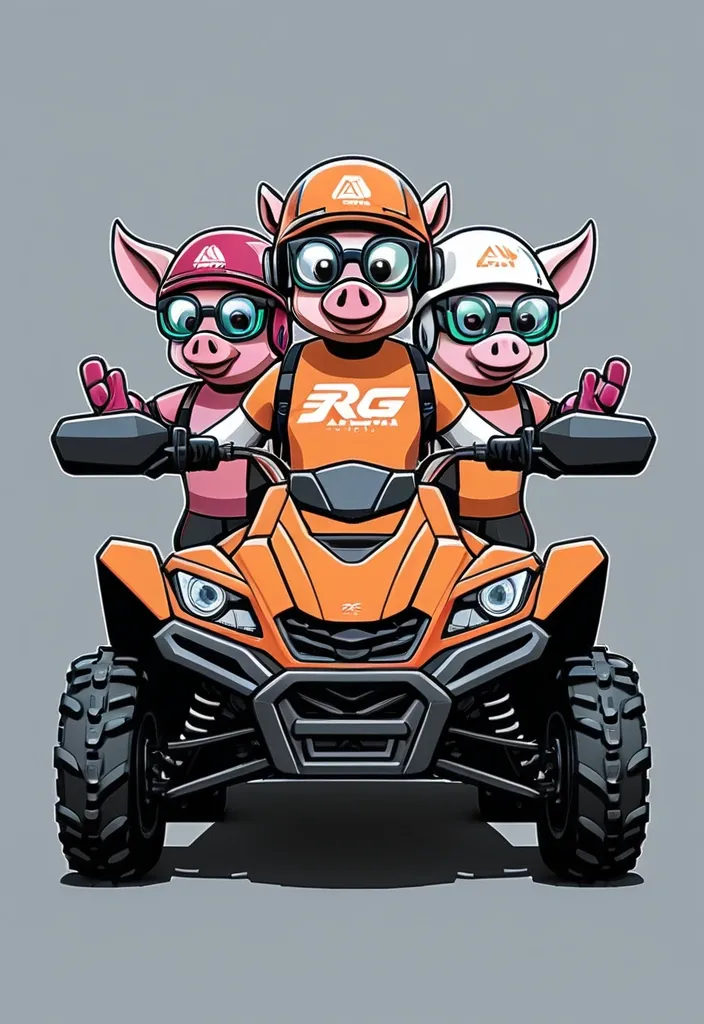
The Three Little Pigs logo concept with an ATV General style: A dynamic , slightly cartoonish logo in bright , but not acidic colors. A combination of realistic ATV details with a friendly animation style of the characters. Composition: The central element is a stylized ATV (side view , slightly at a 3/4 angle) , taking up ~60% of the logo width. On the ATV are three little pigs in protective helmets and glasses , each in their own "zone": the first (in front) is steering , smiling; the second (behind the driver) is holding the handle , looking forward; the third (behind) is slightly raised , waving his hand. The text "Three Little Pigs" is placed under the ATV or along its bottom line. ATV details: clear contours of the wheels , suspension , steering wheel; Light shadows for volume; bright accents: red brake discs , yellow body elements. Piglets' style: rounded shapes , big eyes , cute faces; colors: light pink with beige spots; helmets and glasses in contrasting colors (blue , green , orange). Typography: font: rounded , sans serif , with a slight 3D effect (for example , similar to Comic Sans MS or KG Primary Penmanship); color: dark brown or burgundy; effect: thin white outline of letters for legibility on any background. Color palette: main background: light gray or gradient from blue to white (imitation of the sky); ATV: orange/yellow + black details; piglets: soft pink + colored accessories; text: dark brown + white outline. Dimensions and proportions: logo aspect ratio: 4x3; ATV height: ~40% of the total height; text size: ~15% of the logo height. Logo text: ATV Club "Three Bows" ,
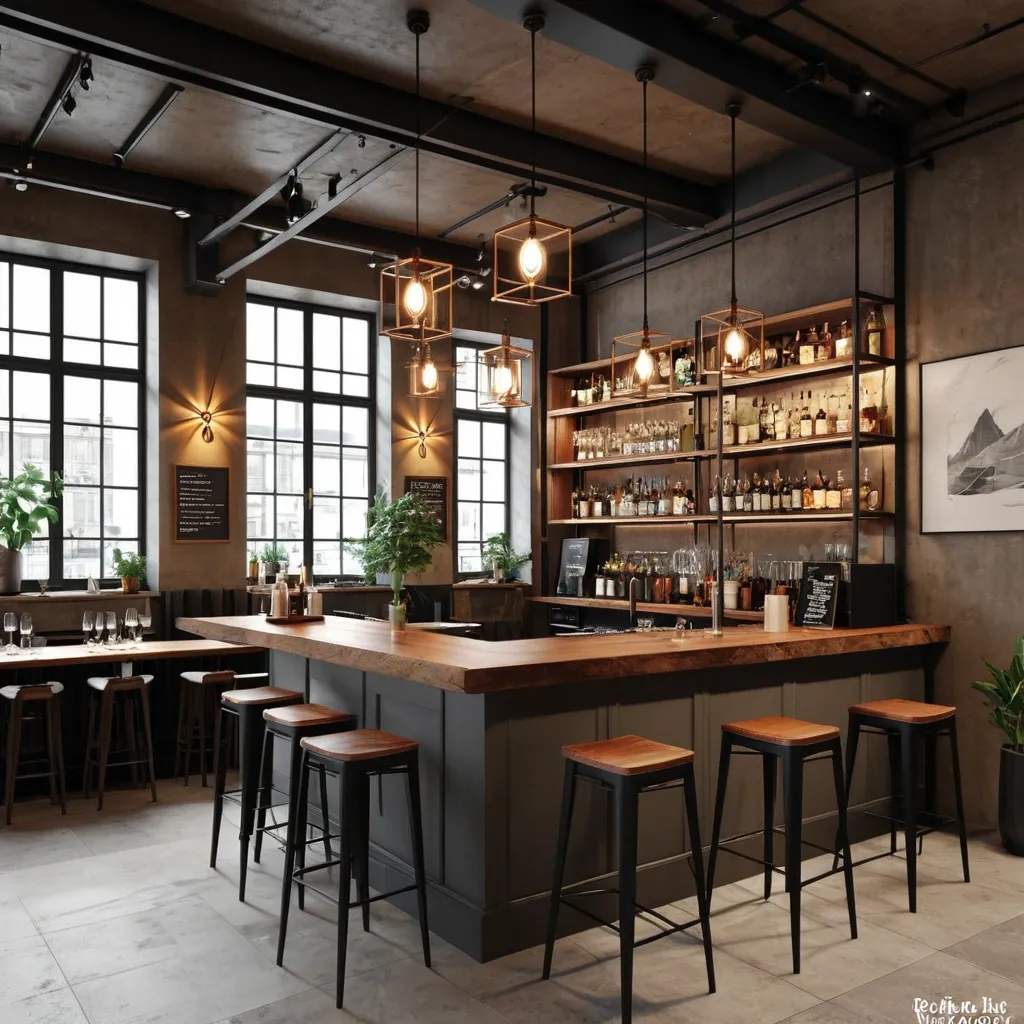
Create a realistic interior design of a 60-square-meter café in a modern loft style. • On the top wall , place the bar counter , reception , and cash register area. • On the right side , add large stained-glass windows and doors that let in plenty of natural light. • The floor should be concrete , but make it look stylish and refined (for example , polished or with a decorative finish). • Walls are painted in a taupe color , with some lighter accents to avoid a dark or dull look. • Add square tables and wooden chairs. • Above each table , hang pendant lamps for a cozy atmosphere. • Decorate the walls with framed photos in a loft style , related to coffee or café culture. • Include wooden bookshelves with plants , books , small statues , and decorative items for warmth and personality. • Make sure the space feels cozy and welcoming , not dark or monotonous — use contrasting light and warm tones. • Add lighting fixtures above the bar area as well. • Behind the bar , include a sign with the café name and a menu board on the wall. ,
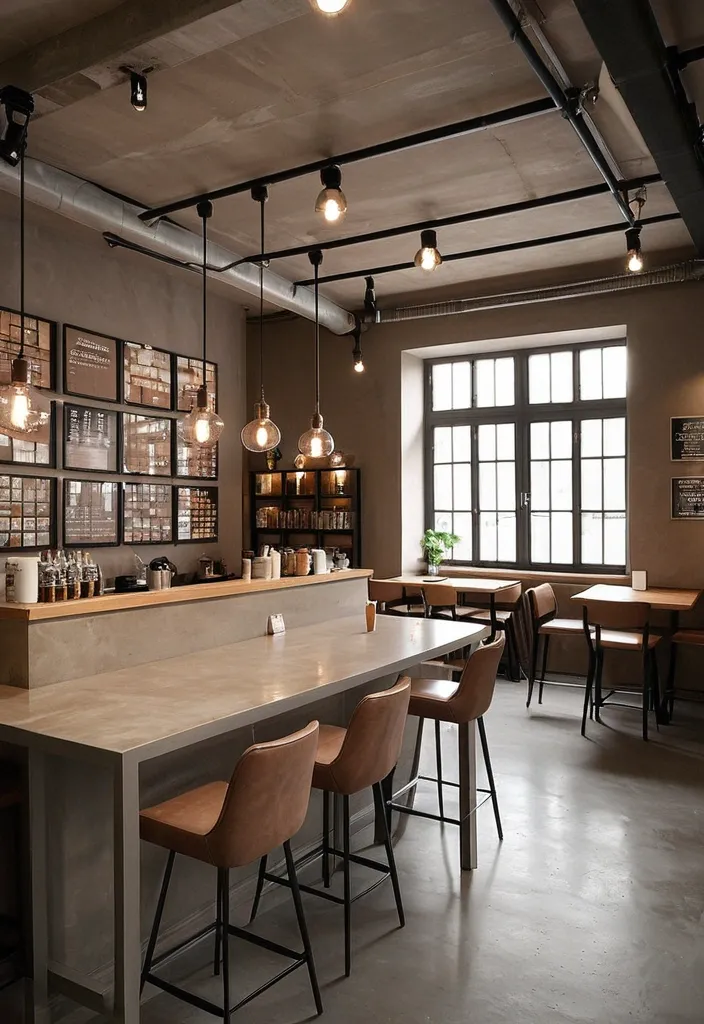
Create a realistic café interior design with an area of 60 square meters in a loft style. On the top wall , place the bar counter , reception , and cash register. On the right side , there are stained-glass windows letting in natural light. The floor is concrete , but make it look aesthetically refined (for example , polished or with a microcement finish). The walls are painted in taupe color. Add square tables and wooden chairs. Above each table , hang industrial-style pendant lamps. Decorate the walls with framed photos related to coffee and its history , matching the loft aesthetic. Include bookshelves with books and decor to create a cozy and inviting atmosphere. Use warm , soft lighting to emphasize a calm , modern , and comfortable mood. ,
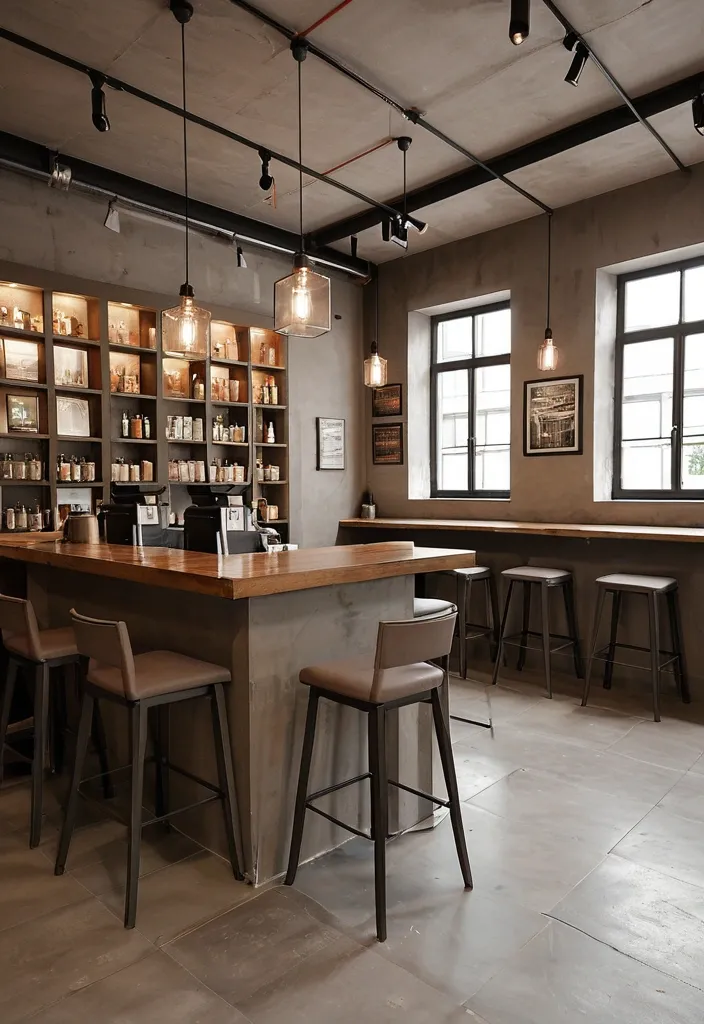
Create a realistic café interior design with an area of 60 square meters in a loft style. On the top wall , place the bar counter , reception , and cash register. On the right side , there are stained-glass windows letting in natural light. The floor is concrete , but make it look aesthetically refined (for example , polished or with a microcement finish). The walls are painted in taupe color. Add square tables and wooden chairs. Above each table , hang industrial-style pendant lamps. Decorate the walls with framed photos related to coffee and its history , matching the loft aesthetic. Include bookshelves with books and decor to create a cozy and inviting atmosphere. Use warm , soft lighting to emphasize a calm , modern , and comfortable mood. ,

Generate a Halloween themed picture of a nighttime garden and a house. Process the music video from Jamie Woon - Night Air for image inspiration. Include eerily glowing night plants and animals (for example , insects , bugs , snails). The house has Halloween decorations on the walls , windows , and the front door. Include Jack O' Lanterns , spiderwebs , and glow-in-the-dark objects. ,
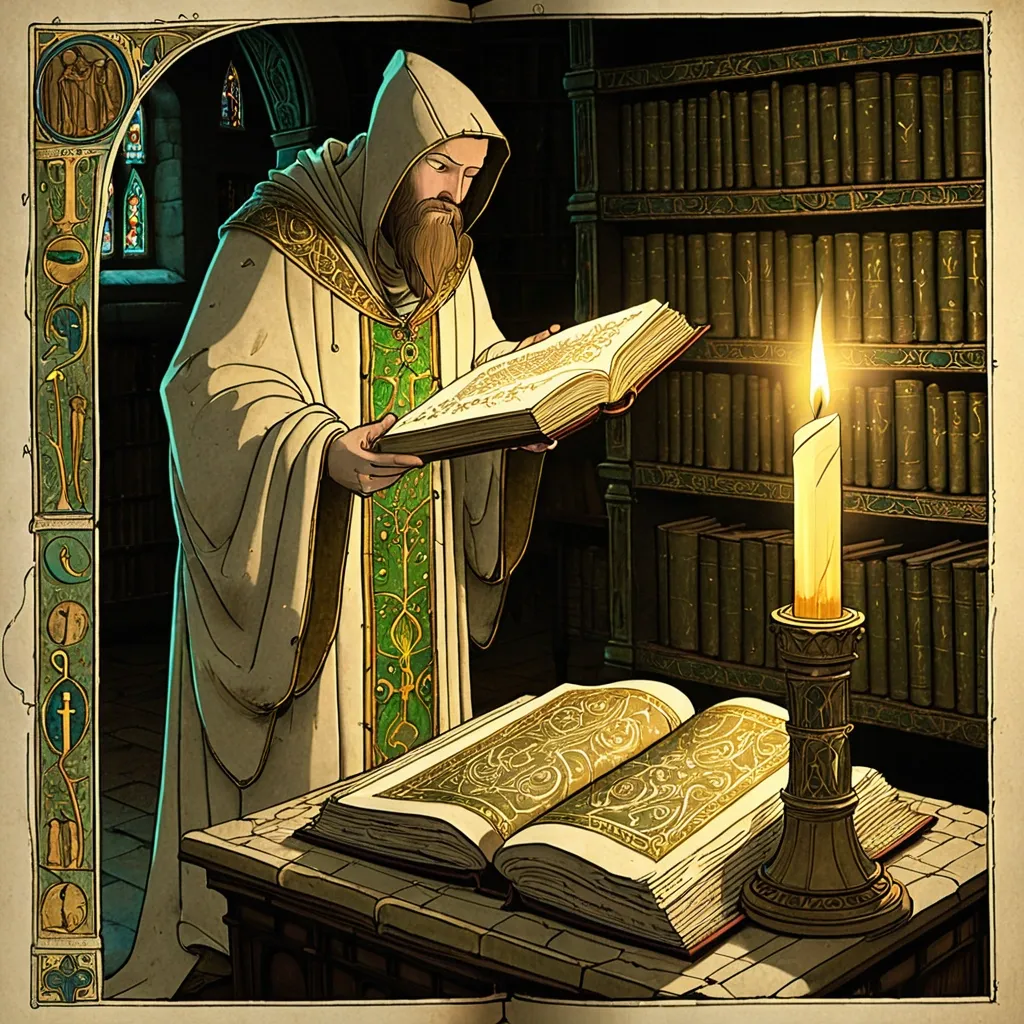
A fairy tale book illustration of a book inside a book inside a book. The book is placed on a pedestal in a candle lit library. The pages look like very old tome pages. The pages use the very old illumination technique and design of early Anglo-Saxon scribes and monks (for example , the Domesday Book). The images depict animals. The illuminations are glowing with an ethereal golden-green light. The rays of light reach out from the pages of the book. The scribe standing in front of the pedestal has its back turned to the viewer. The scribe wearing a dirty white linen robe with a huge cloak. There is a quill in the scribe's hand and a pot of glowing golden ink next to the tome. ,
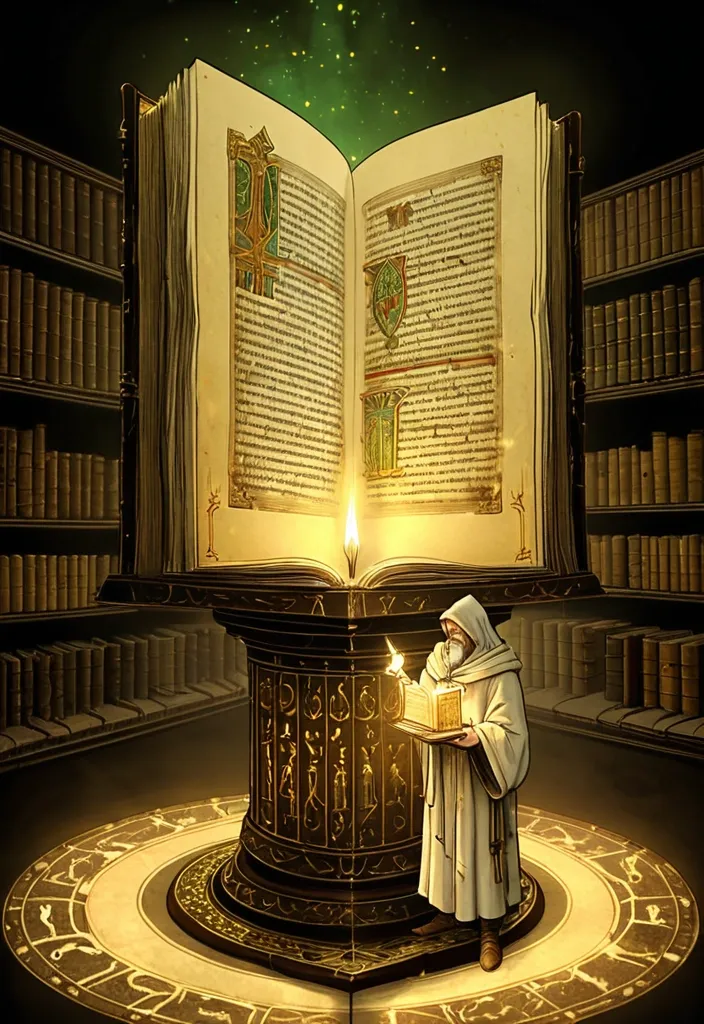
A fairy tale book illustration of a book inside a book inside a book. The book is standing on a pedestal in a candle lit library. The pages look like very old tome pages. The pages use the very old illumination technique and design of early Anglo-Saxon scribes and monks (for example , the Domesday Book). The illuminations are glowing with an ethereal golden-green light. The scribe standing in front of the pedestal is wearing a dirty white linen robe with a huge cloak. There is a quill in the scribe's hand and a pot of glowing golden ink next to the tome. ,

Generate a realistic image of a middle-aged , very pale white skinned female with wavy salt and pepper hair. The female's face is slightly gaunt , with defined cheekbones and a serious look. The white skin has a very slight light blue shimmer. The lip blush is matte ombre pink. The eyebrows are arched , bushy , and light brown. The eyeshadow is natural beige hooded eye makeup. The model has heavily lidded hooded wolf eyes. The model is wearing a faded indigo blue furred winter cloak with violet , white and red cross-stitch embroidery patterns (for example , wild flowers) on it. In the background , there is a winter forest scene. ,
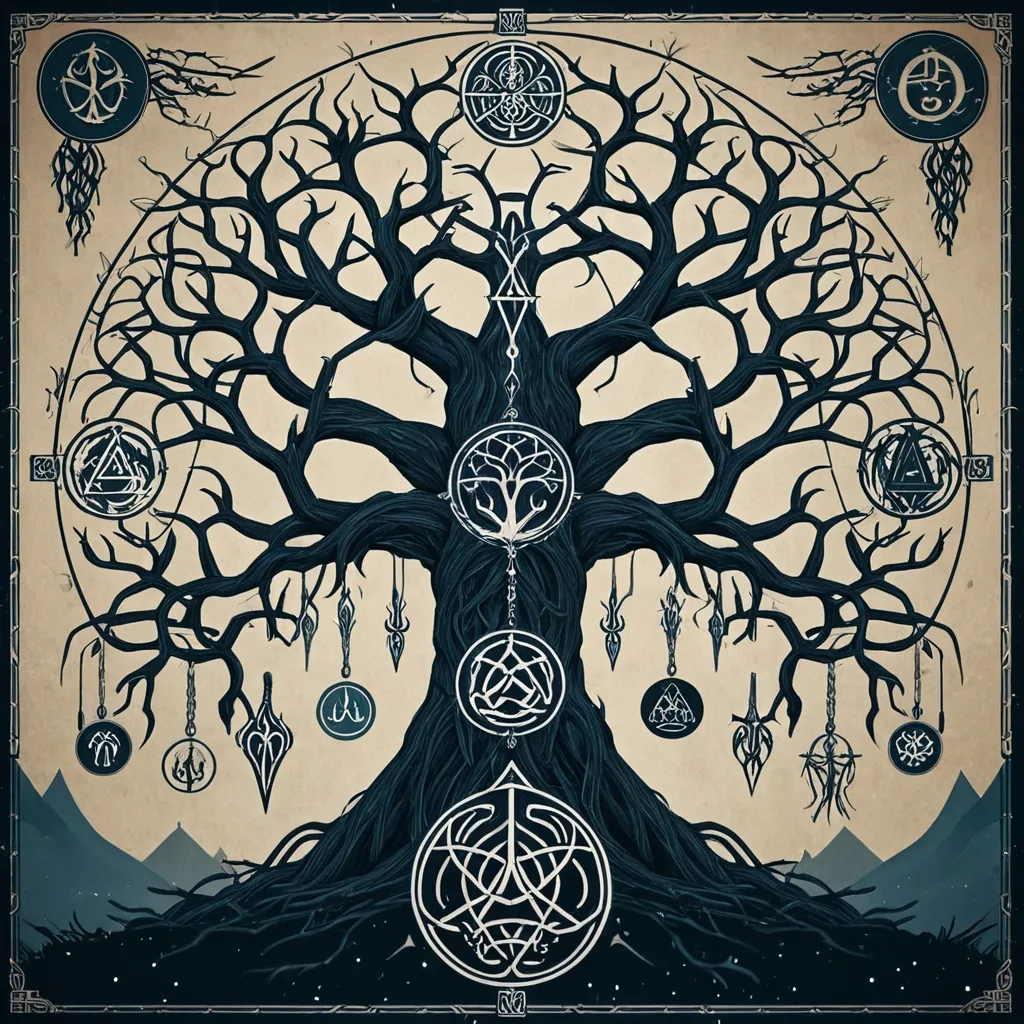
Viking Norse Saga style picture of Ygdrassil. The 9 branches represent the 9 realms (for example , Asgard , Midgard , Jotunheim , and so on). Use a representative image of the realms for each endpoint of the 9 branches. Include the figure hanging upside down from the Ygdrassil tree. Also include elder futhark runes around the image. Use brown , petrol blue , black , red , and white colors. ,
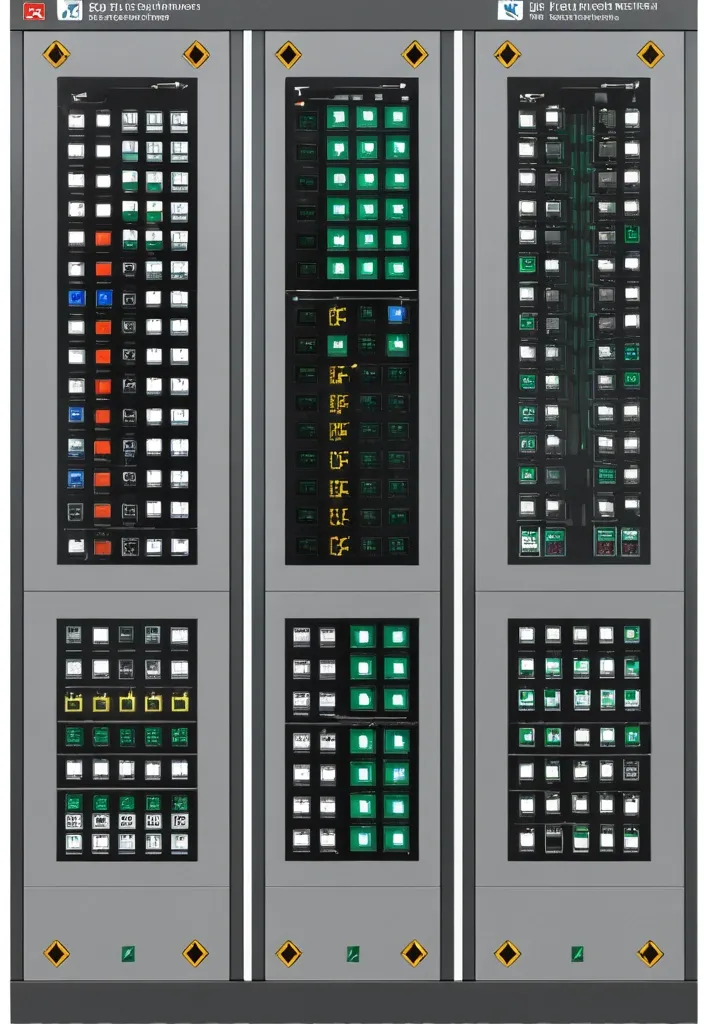
Description of the visualization and control system of the automation complex The purpose of the system is to provide the operator with a single , intuitive interface for monitoring and managing all subsystems of the complex in real time. Architecture of the main window (Generalized Status Panel): The main screen is designed according to the principle of "from general to private". The center contains critical information about the power supply system , on which all other systems depend. The remaining subsystems are grouped logically around the center. 1. Central unit: Power supply system It is visualized as a circle divided into three sectors. Large left sector (≈45%): Transformer substations (TP) 5 blocks are displayed , one for each TP. Each block contains: TP number/name (for example , TP-1 , TP-2). The indicator of the active power line: The "Network" icon with backlight (green - main , yellow - backup). Transformer status: "Main" / "Standby" (or icons). Key parameters from accounting nodes: Current (I) , Voltage (U) , Power (P). The values are output for the active line. General TP status: Color indication (Green - Normal , Yellow - Warning , Red - Emergency). Large right sector (≈45%): Main switchboards 5 blocks are displayed , one for each storage unit. Each block contains: The number/name of the GRSH (for example , GRSH-1). Active power line indicator: Similar to TP. Key parameters from accounting nodes: I , U , P. The general status of the GRS: Color indication. Lower small sector (≈10%): Uninterruptible power supply (UPS) Large text or pictogram status indicator: "Mains operation" (Green) "Battery operation" (Yellow/Orange) Battery level indicator: Percentage scale (from 0% to 100%). The color varies depending on the level (green >50% , yellow 20-50% , red <20%). 2. Peripheral blocks around the center They are arranged around a central circle , forming a "rim". Upper and lower parts of the rim: Ventilation of the web blowing Upper part: 9 installations on top. The lower part: 9 installations from the bottom. There are 18 icons/blocks in total. Each icon represents one installation and has a color indication of the status.: Green: Enabled Gray: Turned off Red: An accident (for example , the differential pressure sensor on the filter went off , an error in the drive) Black/Blue: No power supply When hovering over the cursor , a tooltip appears with details (the condition of the fan , valve , filter blockage). Left and right sides of the rim: Indoor ventilation The left and right sides are divided equally to display the 12 settings on each side. There are 24 icons/blocks in total. The same color status indication for each installation. 3. Corner blocks: Other subsystems They are located in the four corners of the screen for easy and fast perception. Upper left corner: Roller shutters (48 pcs.) Summary information is displayed as an information block.: "Closed: XX / Open: XX" (numeric values). A graphical indicator (for example , a stripe divided into green and blue parts , proportional to the number). General status: Green icon "OK" or Red icon "Emergency" (if at least one roller shutter has an emergency status). Upper right corner: Elevators (2 pcs.) Two vertical blocks , one for each elevator. Each block contains: Elevator number (Elevator 1 , Elevator 2). Floor indicator: A large number (for example , 3). Motion indicator: Up/down arrow or Stop icon. General status: The background color of the block (Green - normal , Gray - power off , Red - emergency , Blue - no connection). Lower left corner: EVIL Lights (Roof lamps) A large indicator in the form of a stylized lamp or icon. Color status indication: Bright Yellow/White: Included Gray: Off Red: Crash Black/Blue: No power supply Lower right corner: Heated storm drains Similar in style to the "Fires of EVIL" block. Color status indication: Orange/Red: Enabled Gray: Off Red (flashing): Crash Black/Blue: No power supply Navigation and management: Main Screen: It is an overview map. All the elements on it are clickable. Details: Clicking on any sector (TP , GRS , ventilation group , roller shutter unit) opens a new window with detailed information: TP/GRS: Single-line network diagram , status of all feeders and sectional switches , detailed power parameters. Ventilation: Detailed status of each piece of equipment in the selected group (fan , valve , filter condition) , possibility of manual control. Roller shutters: A table or plan of the building with the condition of each of the 48 roller shutters , group and individual control buttons. Control: The control buttons (Start , Stop , Open , Close) are located on the detailed screens. On the main screen , quick action buttons ("Emergency activation") can be displayed for critical systems (for example , EVIL lights). Visual style: Color scheme: An intuitive color palette is used (Green is the norm , Yellow/Orange is a warning , Red is an accident , Gray/Blue - disabled/no data). Fonts: Clear , easy-to-read fonts. Critical information is displayed larger. Animation: Minimal and informative (for example , smooth change of values , flashing for emergency states). ,
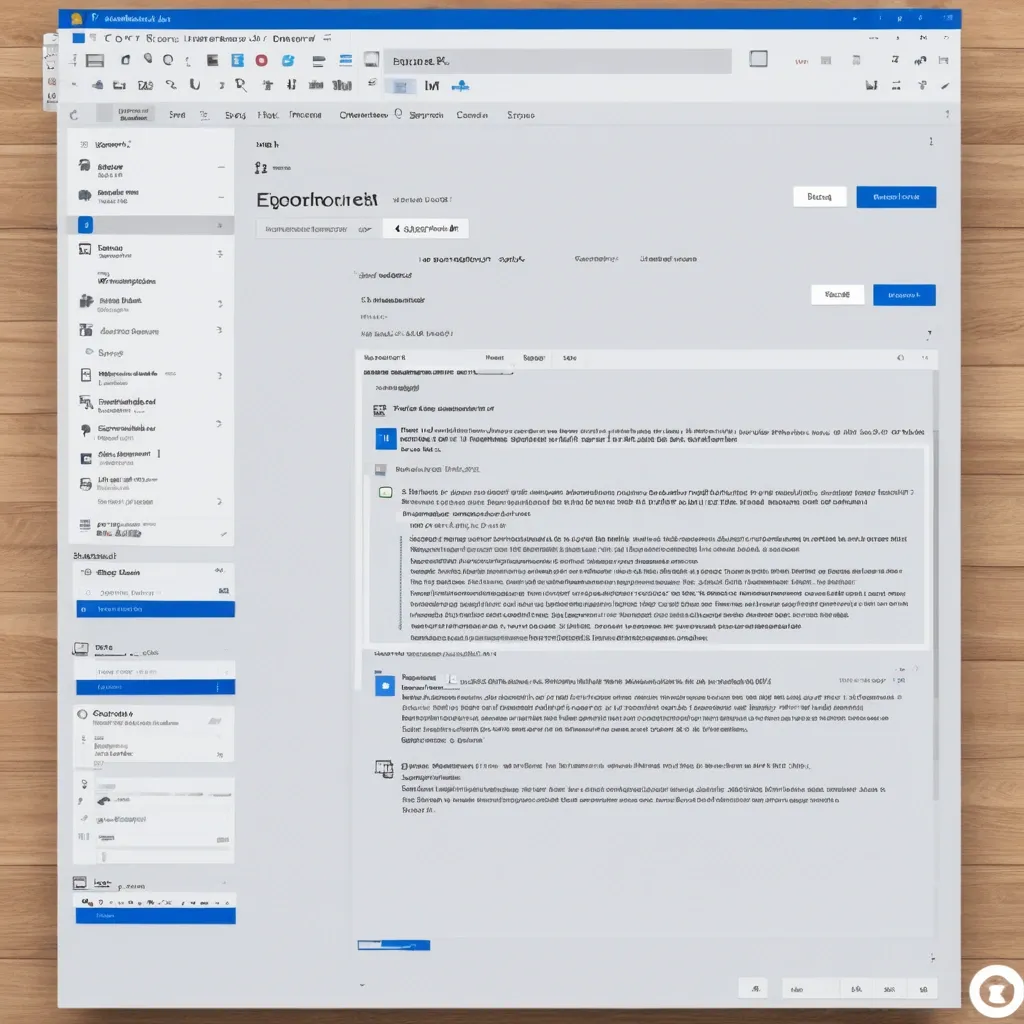
Мне нужен одностраничный one page. 🔹 Концепт One-pager (трендовый , стильный , без лишнего) Структура (A4 , 1 страница): Заголовок: «Аналитика , которая работает на бизнес» (крупный , жирный , современный шрифт). Блок 1 — Проблема клиента: «У вас есть данные , но нет быстрых и понятных отчётов. Решения принимаются на ощущениях , а не цифрах.» (иконка ⚠️) Блок 2 — Решение: SQL-выгрузки → Excel-отчёты за 1 день. BI-дашборды (DataLens/PowerBI) с фильтрами. A/B-тесты и гипотезы с выводами. (иконки таблицы 📊 , графика 📈 , теста 🧪) Блок 3 — Пример результата (визуал): Слева: маленький скрин «до» (сырая таблица). Справа: «после» (чистый график/дашборд). Подпись: «Из данных → в понятные решения». Блок 4 — Формат работы: Мини-бриф (10 мин). Черновой макет за 24–48 ч. Финал + инструкция. Блок 5 — Контакт и призыв: «Готов показать демо под ваши данные уже завтра → начнём с малого кейса.» (кнопка/иконка «Начать проект» или QR/ссылка) 🔹 Стиль Цвета: белый фон + акцент 1 (синий/фиолетовый , тренд 2025) + акцент 2 (жёлтый/лайм). Шрифт: крупные заголовки (sans-serif , рубленый) , текст — аккуратный , читабельный. Макет: чистый , много воздуха , минимум текста , максимум смысла. Иконки в стиле flat , современные. 🔹 Продающий текст (коротко и чётко) Заголовок: 👉 «Из данных — в решения. Быстро , наглядно , для вашего бизнеса.» Тело: Автоматизирую отчёты (SQL , Excel , BI). Визуализирую ключевые метрики. Провожу A/B тесты и показываю выводы. Результат для вас: ⚡ Чёткие цифры. 📊 Красивые отчёты. 🚀 Решения быстрее. Call to Action: ✉️ Напишите — через 24 часа получите демо на ваших данных.Вот подготовленный текстовый каркас (готовый к верстке) 🔹 Заголовок (оффер) «Аналитика данных для вашего бизнеса: от SQL-выгрузки до BI-дашборда за 48 часов» 🔹 Ценность Помогаю компаниям быстро превратить сырые данные в понятные отчёты и дашборды. Результат: прозрачные метрики , управленческие решения на основе фактов , экономия времени команды. 🔹 Услуги / Компетенции SQL-выгрузки → отчёт в Excel — быстрый доступ к данным без ручной рутины. BI-дашборды (DataLens / Power BI) — наглядные графики и фильтры для руководителей. Анализ продаж и маркетинга — выявление ключевых драйверов роста и слабых точек. A/B тесты и эксперименты — проверка гипотез и обоснование решений цифрами. Автоматизация отчётов — ежедневные данные без Excel-правок вручную. 🔹 Мини-кейс (пример) Задача: интернет-магазину нужно было отслеживать ежедневные продажи по категориям. Решение: SQL-выгрузка + дашборд в DataLens (6 графиков , фильтры). Результат: руководство получило визуальные отчёты в реальном времени → сократило подготовку отчётности с 3 часов до 15 минут. 🔹 Преимущества работы со мной ⚡ Быстрый результат (черновой макет за 24–48 часов). 📊 Понятные визуализации для бизнеса. 🔒 Конфиденциальность и аккуратность с данными. 🚀 Опыт задач в финтехе , e-commerce и маркетинге. 💬 Постоянная коммуникация и поддержка после сдачи проекта. 🔹 Как мы работаем Запрос (получаю задачу и данные). Мини-бриф (5 вопросов для уточнения). Черновой макет (24–48 часов). Согласование и финал. Передача отчёта/дашборда + инструкция. 🔹 Контакты 📩 Email: voronin.ai@example.com 💬 Telegram: @voronin_ai 🌍 Портфолио: github.com/voronin-ai 📌 Этот текст уже готов для One-pager-дизайна в стиле твоих примеров: чистый , бизнесовый , с блоками и иконками. Сделай очень четкую пи продающую исторрию на одностраничнике для фрилансера. Обрати вннимание на текст и и так далее. в общем сделай все в ультро модном одностраничном стиле ,
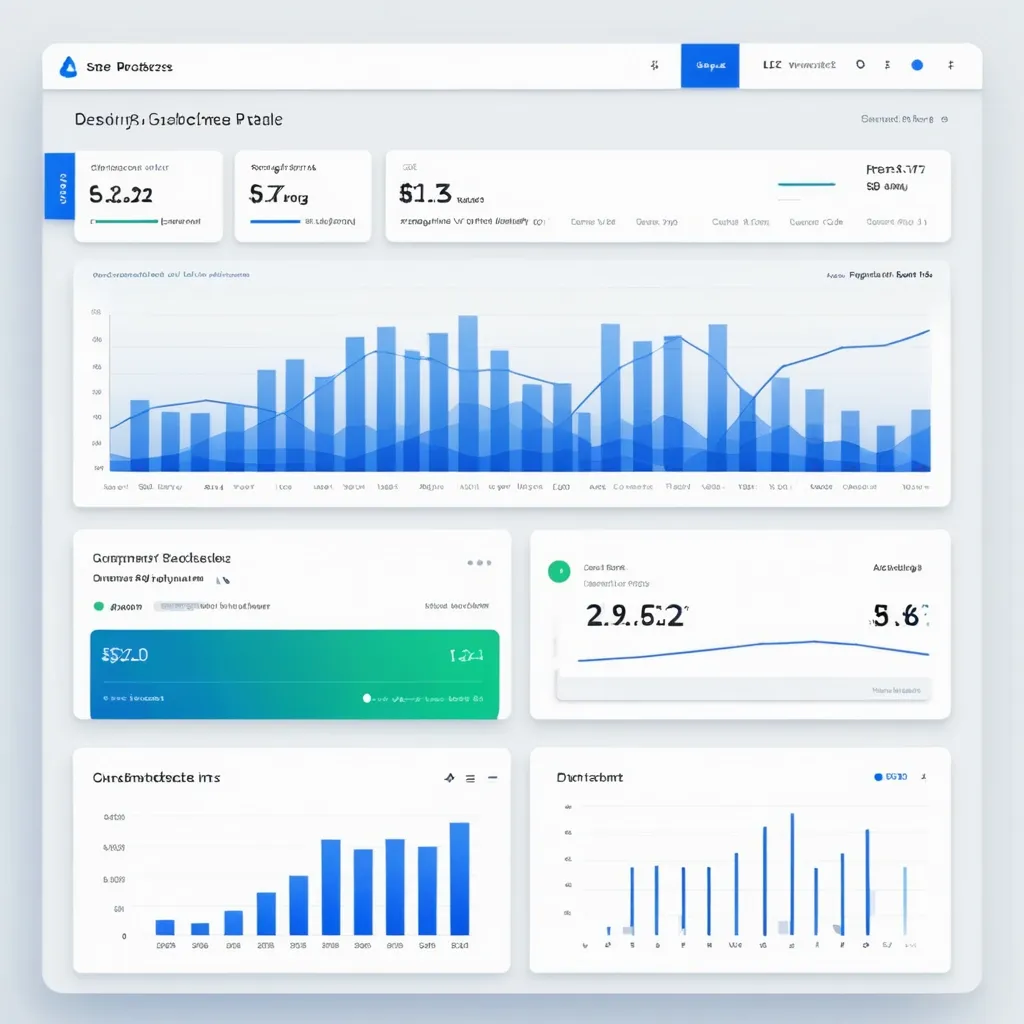
Design a clean , professional Analytics Page for the SynCloud Customer Portal. The page should focus on usage insights and billing alerts. Include the following features: Overview Cards (Top Section) Total API Requests (count) Total Compute Tokens used Current Billing Cycle Usage (percentage of quota consumed) Last Request Timestamp Budget Threshold Alerts Show colored alert bars at 50% , 80% , and 100% usage. Example: Green (50%) , Orange (80%) , Red (100%). Notifications panel showing recent alerts. Charts & Graphs Line chart: Daily API requests (last 7 days). Bar chart: Token consumption per week. Pie chart: Requests by service type (Playground , API , Agent). Detailed Usage History (Table) Columns: Date , Time , Request Type , Tokens Used , Status (Success/Failed). Search and filter by date range , request type. Option to export data as CSV/PDF. UX Considerations Sidebar navigation link highlighted: Analytics. Responsive layout (desktop + mobile). Minimal color palette with blue/white gradients and soft shadows. Tooltips on graphs for detailed insights. ,
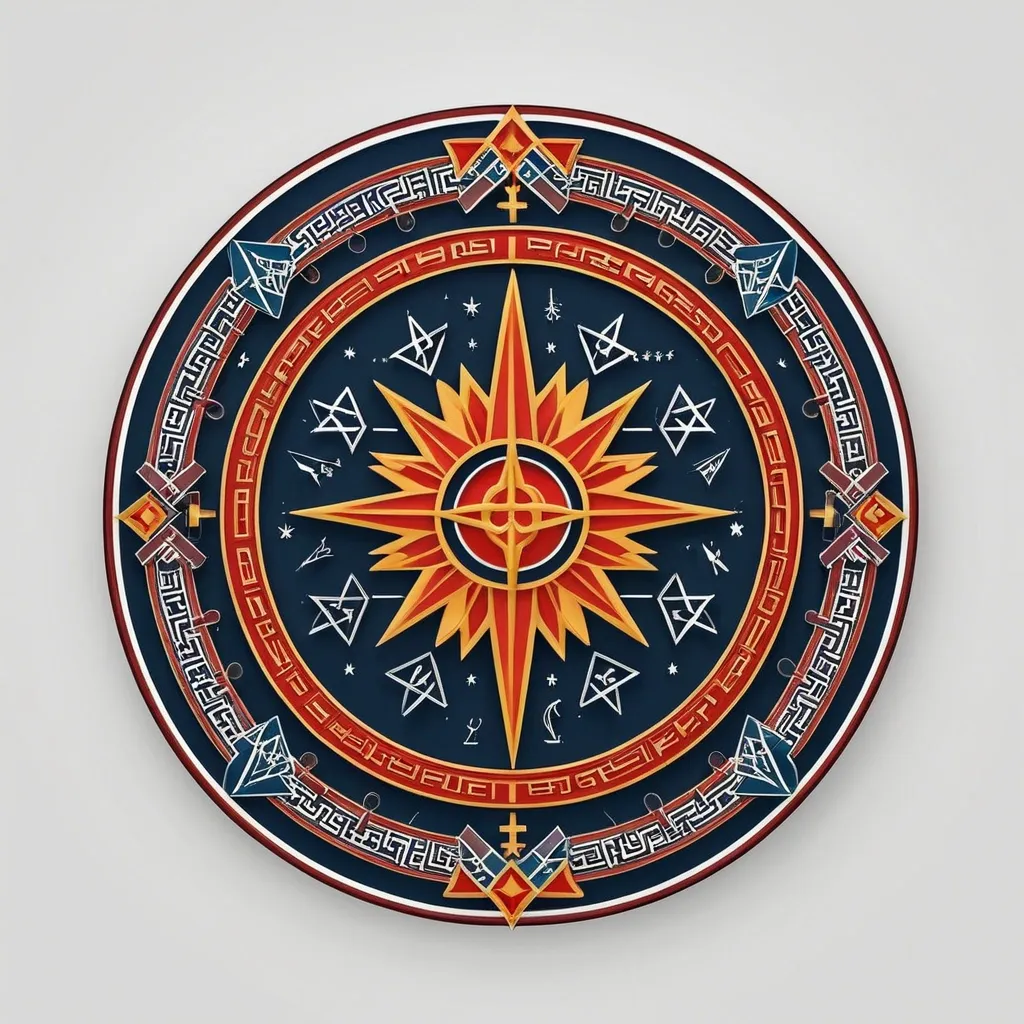
We need a logo for a conference of school teachers. The name is "Altyn Kazyk - education that changes the world". "Altyn Kazyk" (North Star) is a symbol of orientation , constancy and guiding value , which reflects the role of education in the development of society. The visual identity should emphasize the significance of the event , combining a modern style with the cultural codes of Kyrgyzstan , for example , national ornament , mountains , etc. ,

create me a volumetric 3D image of a cosmonaut in a spacesuit sitting on a throne with a red outline and a gold embossing. the cosmonaut on the chest should be depicted with gold elements , but a little. I have attached an example of the image above. make the image high-quality and natural. add a little glare. ,

big upper curve full length portrait of photorealistic beautiful brunette seductress , devilish , vampire , long wavy white hair , hell , dark sky , gloomy , exotic black leather suit , , in full growth , red eyes , medium makeup , choker style collar , stockings , high boots , blood color eyes , detailed face , goth , full body , dark fantasy , bloody , Underworld Remake , (Selene) Majestic cinematic close-up of a professional quality photo of a futuristic street , Stunning cyberpunk woman posing with a gun on a street in a ruined city , extremely detailed magazine quality photography , cinematic lighting , 8k sharp focus. expert precision , including intricate examples of undeniably stunning image quality and detailed design , stunningly unique with intricate details , stunning backgrounds , epic , detailed ink , vintage , Dramatic Lighting , Fantasy , Misty atmosphere , Trippy ,
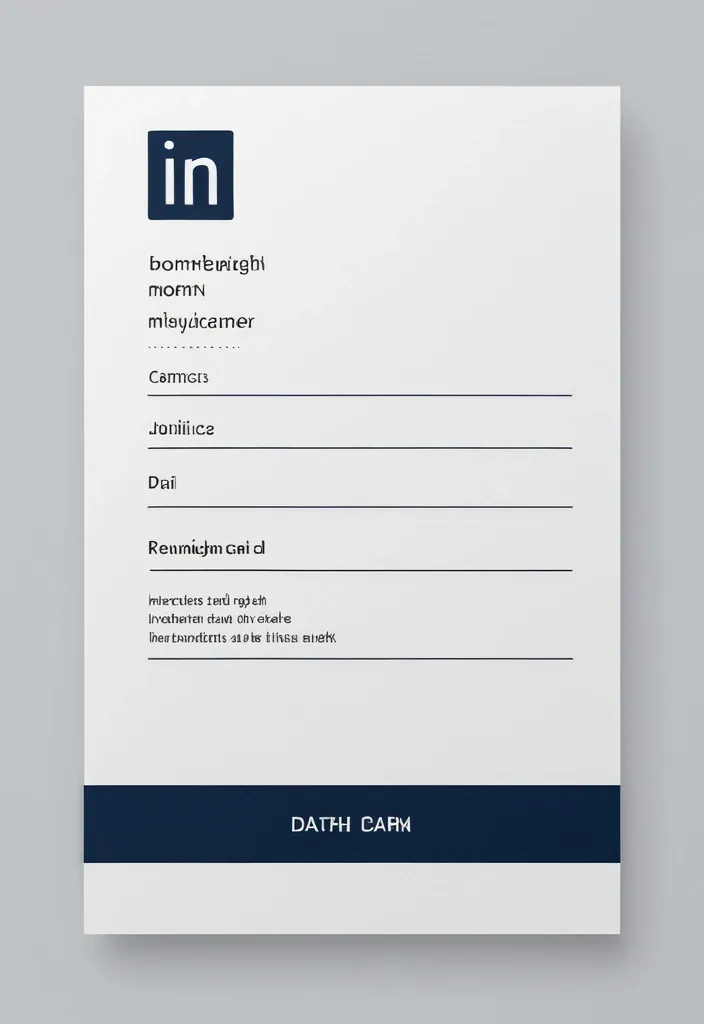
Generate me a card with contact information. A card for a master in the field of cooking. Compact design of contact data is required. It is important that it looks stylish and clear. Visual description of the card: - Background: Light gray or white with a thin shadow for volume. - Text: Dark blue or black , font - modern grotesque (for example , "Inter" or "Helvetica Neue"). - Icons: Minimalistic SVG icons of a phone , mail , etc. - Accents: Use blue or dark blue to highlight the name and links. ,

Generate me a card with contact information. A card for a master in the field of cooking. Compact design of contact data is required. It is important that it looks stylish and clear. Visual description of the card: - Background: Light gray or white with a thin shadow for volume. - Text: Dark blue or black , font - modern grotesque (for example , "Inter" or "Helvetica Neue"). - Icons: Minimalistic SVG icons of a phone , mail , etc. - Accents: Use blue or dark blue to highlight the name and links. ,
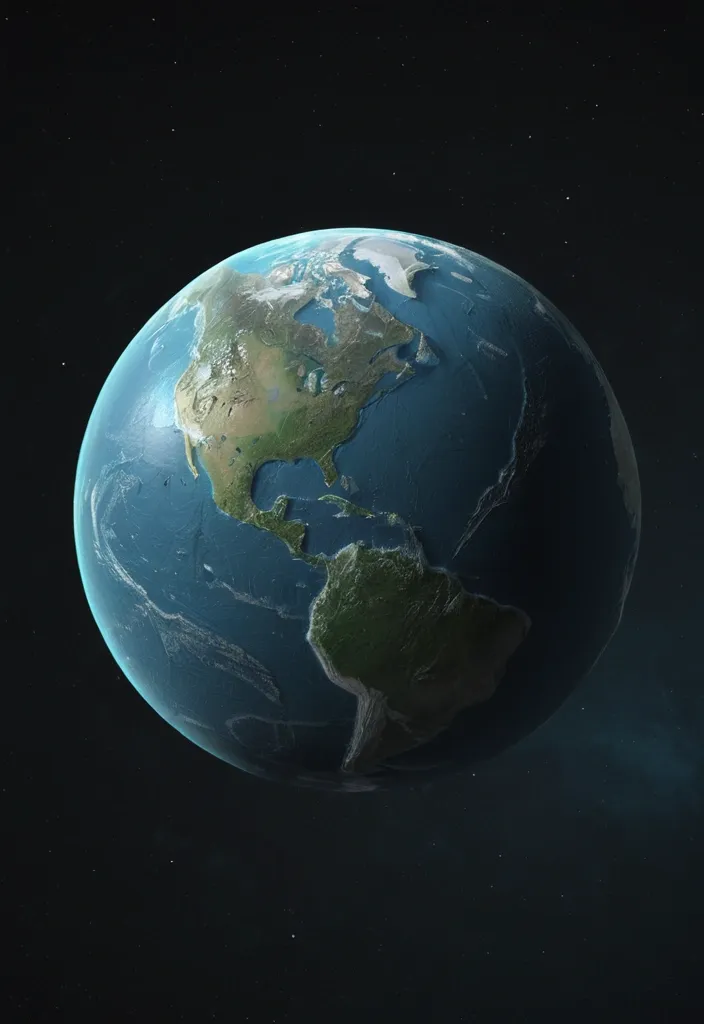
Render a realistic spherical planet that fills the frame , with fictional , non-Earth landmasses. The landmasses should be textured and colored based on the provided example images. Instead of oceans , leave all non-land areas as clean alpha transparency. The result should be a full 3D planet — not a flat map — with only the continents visible , and the rest of the globe fading into alpha where water would be. No stars , no space , no atmosphere , no background — just the planet on alpha ,
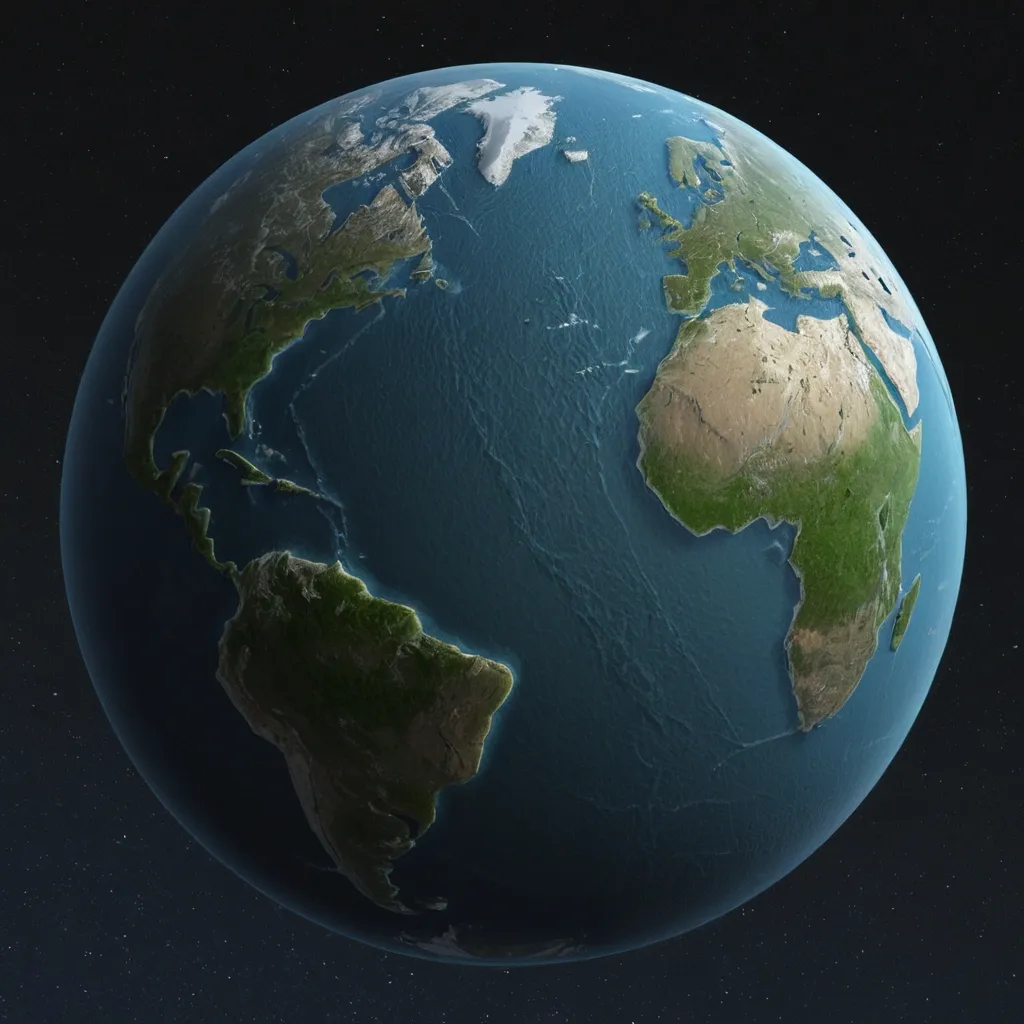
Render a realistic spherical planet that fills the frame , with fictional , non-Earth landmasses. The landmasses should be textured and colored based on the provided example images. Instead of oceans , leave all non-land areas as clean alpha transparency. The result should be a full 3D planet — not a flat map — with only the continents visible , and the rest of the globe fading into alpha where water would be. No stars , no space , no atmosphere , no background — just the planet on alpha ,
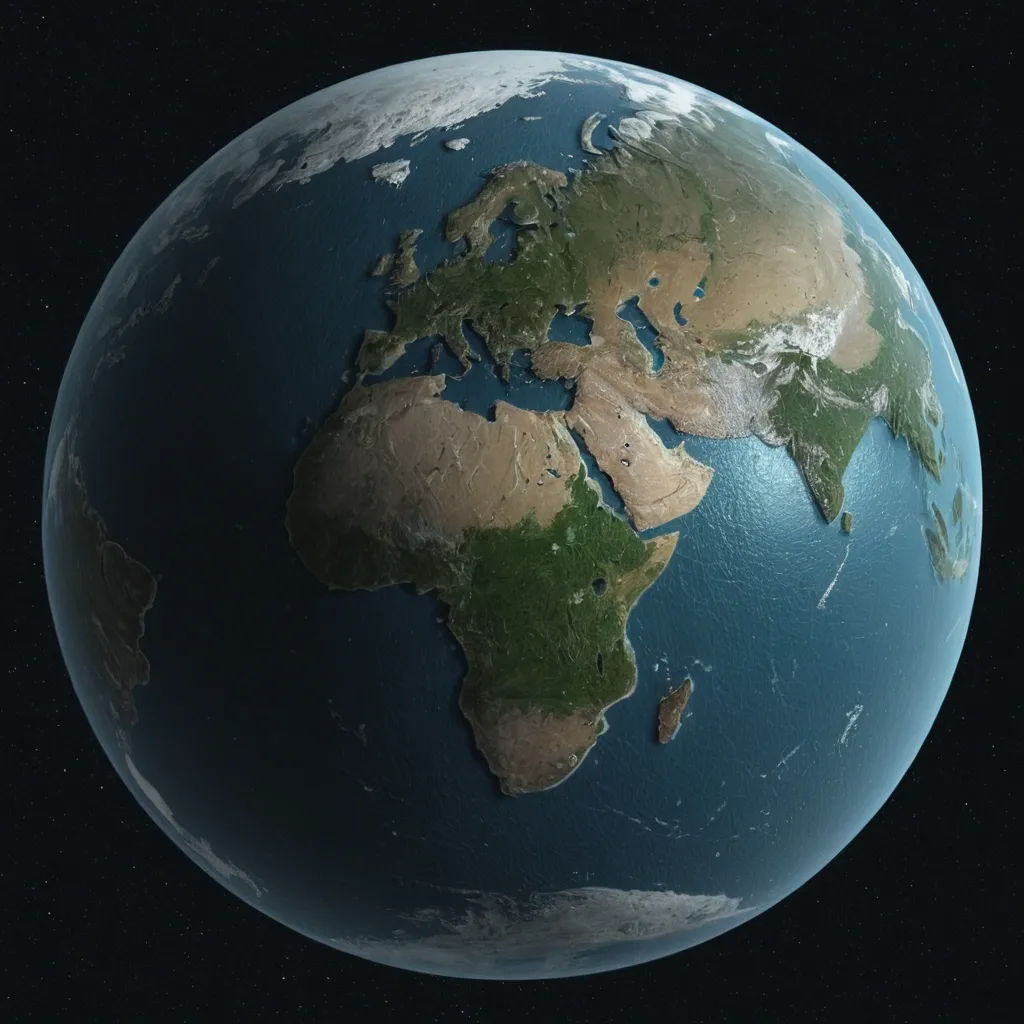
Render a realistic spherical planet that fills the frame , with fictional , non-Earth landmasses. The landmasses should be textured and colored based on the provided example images. Instead of oceans , leave all non-land areas as clean alpha transparency. The result should be a full 3D planet — not a flat map — with only the continents visible , and the rest of the globe fading into alpha where water would be. No stars , no space , no atmosphere , no background — just the planet on alpha ,
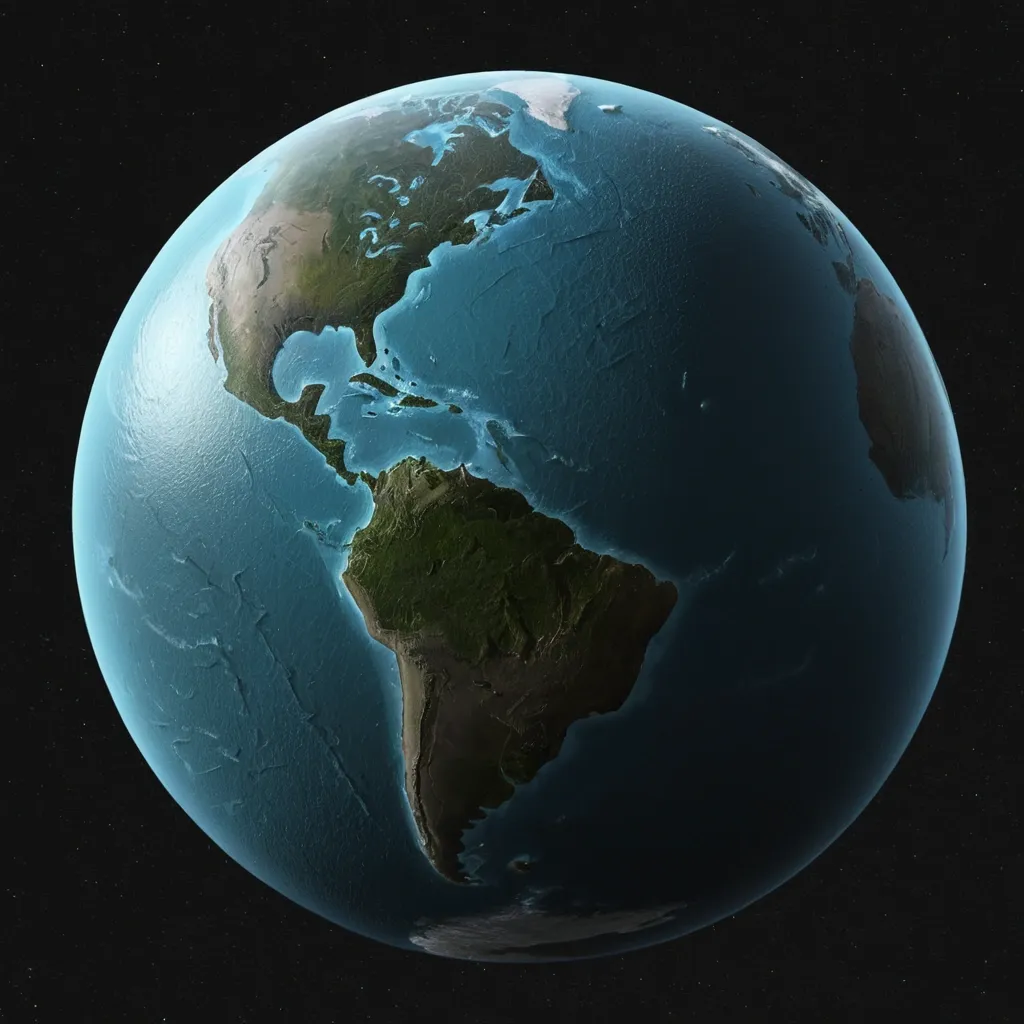
Render a realistic spherical planet that fills the frame , with fictional , non-Earth landmasses. The landmasses should be textured and colored based on the provided example images. Instead of oceans , leave all non-land areas as clean alpha transparency. The result should be a full 3D planet — not a flat map — with only the continents visible , and the rest of the globe fading into alpha where water would be. No stars , no space , no atmosphere , no background — just the planet on alpha ,
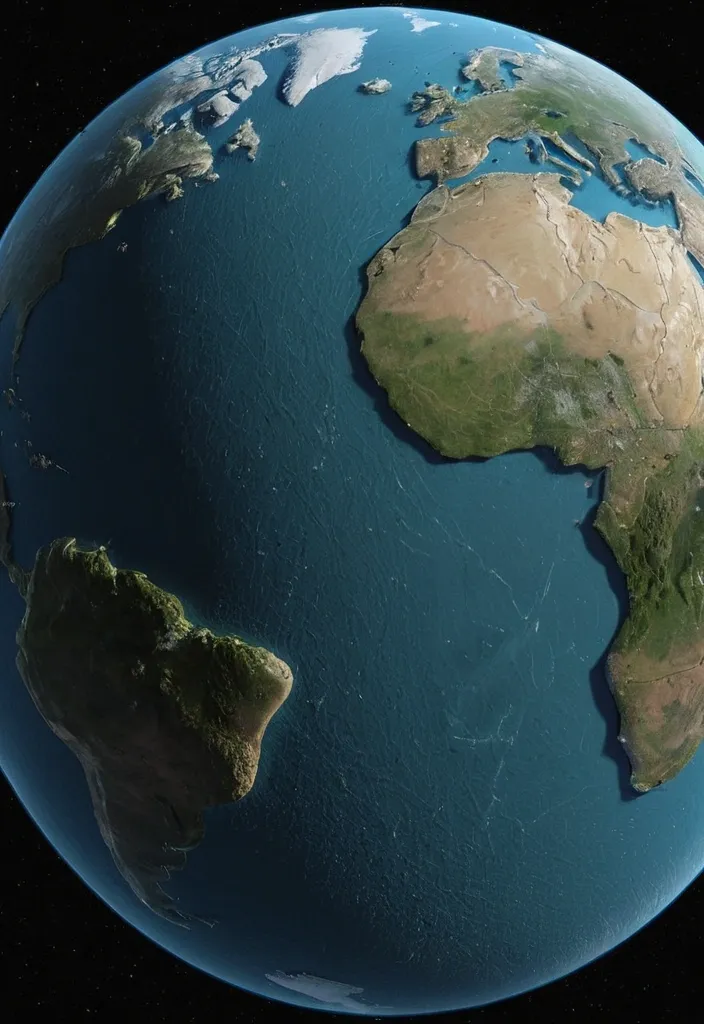
Render a realistic spherical planet that fills the frame , with fictional , non-Earth landmasses. The landmasses should be textured and colored based on the provided example images. Instead of oceans , leave all non-land areas as clean alpha transparency. The result should be a full 3D planet — not a flat map — with only the continents visible , and the rest of the globe fading into alpha where water would be. No stars , no space , no atmosphere , no background — just the planet on alpha ,
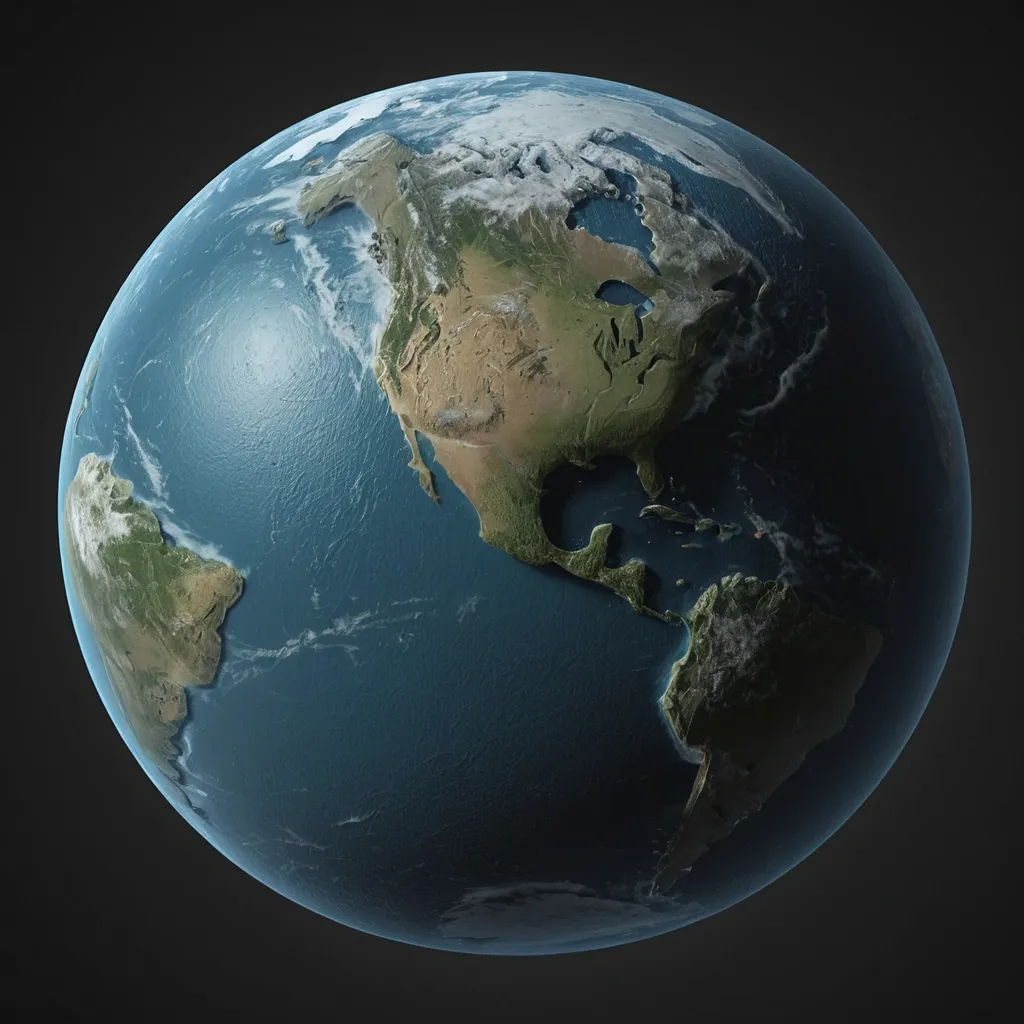
Render a realistic spherical planet that fills the frame , with fictional , non-Earth landmasses. The landmasses should be textured and colored based on the provided example images. Instead of oceans , leave all non-land areas as clean alpha transparency. The result should be a full 3D planet — not a flat map — with only the continents visible , and the rest of the globe fading into alpha where water would be. No stars , no space , no atmosphere , no background — just the planet on alpha ,
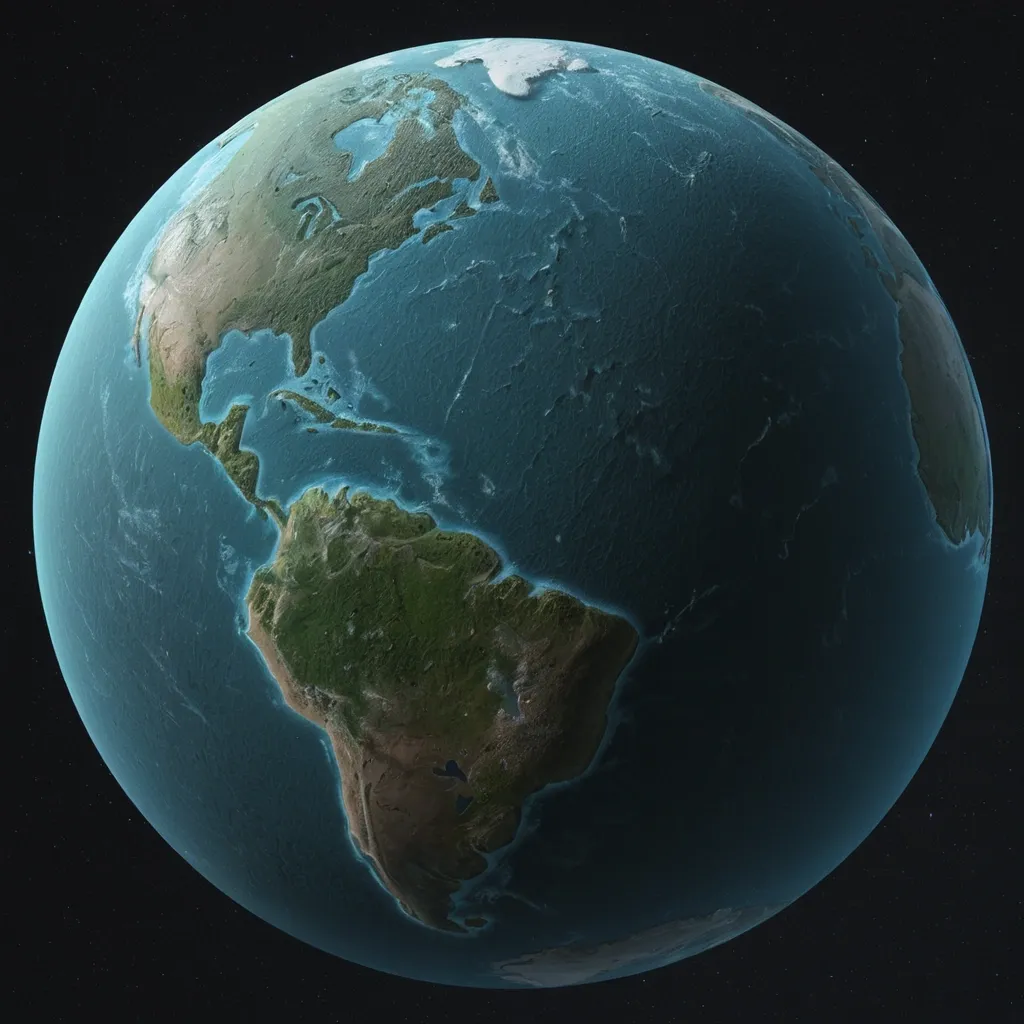
Render a realistic spherical planet that fills the frame , with fictional , non-Earth landmasses. The landmasses should be textured and colored based on the provided example images. Instead of oceans , leave all non-land areas as clean alpha transparency. The result should be a full 3D planet — not a flat map — with only the continents visible , and the rest of the globe fading into alpha where water would be. No stars , no space , no atmosphere , no background — just the planet on alpha ,
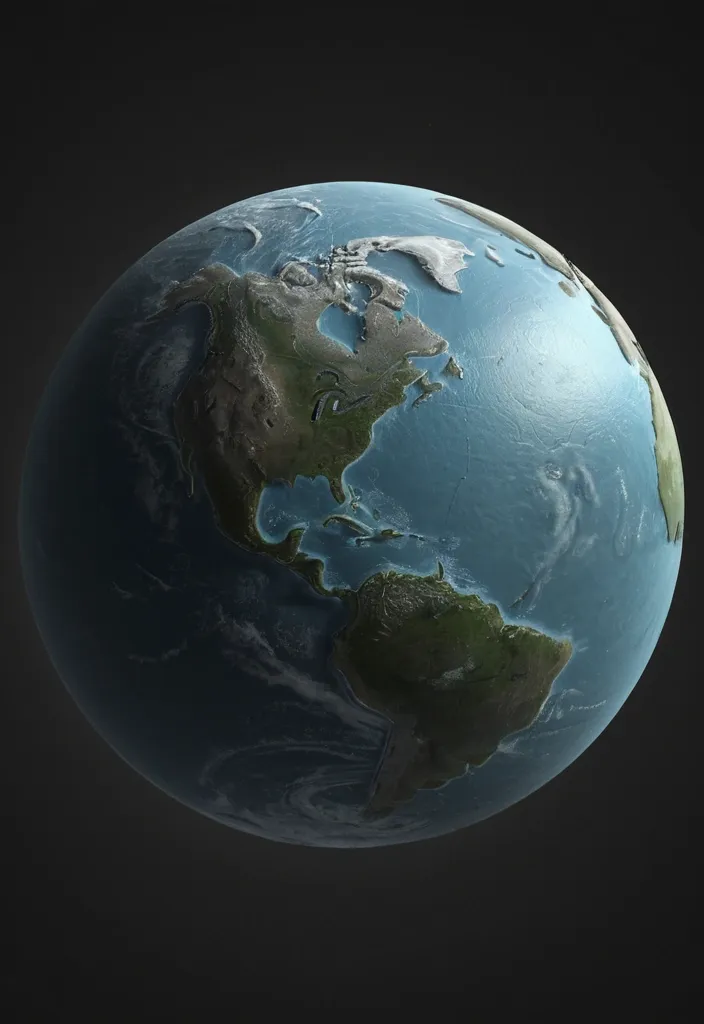
Render a realistic spherical planet that fills the frame , with fictional , non-Earth landmasses. The landmasses should be textured and colored based on the provided example images. Instead of oceans , leave all non-land areas as clean alpha transparency. The result should be a full 3D planet — not a flat map — with only the continents visible , and the rest of the globe fading into alpha where water would be. No stars , no space , no atmosphere , no background — just the planet on alpha ,
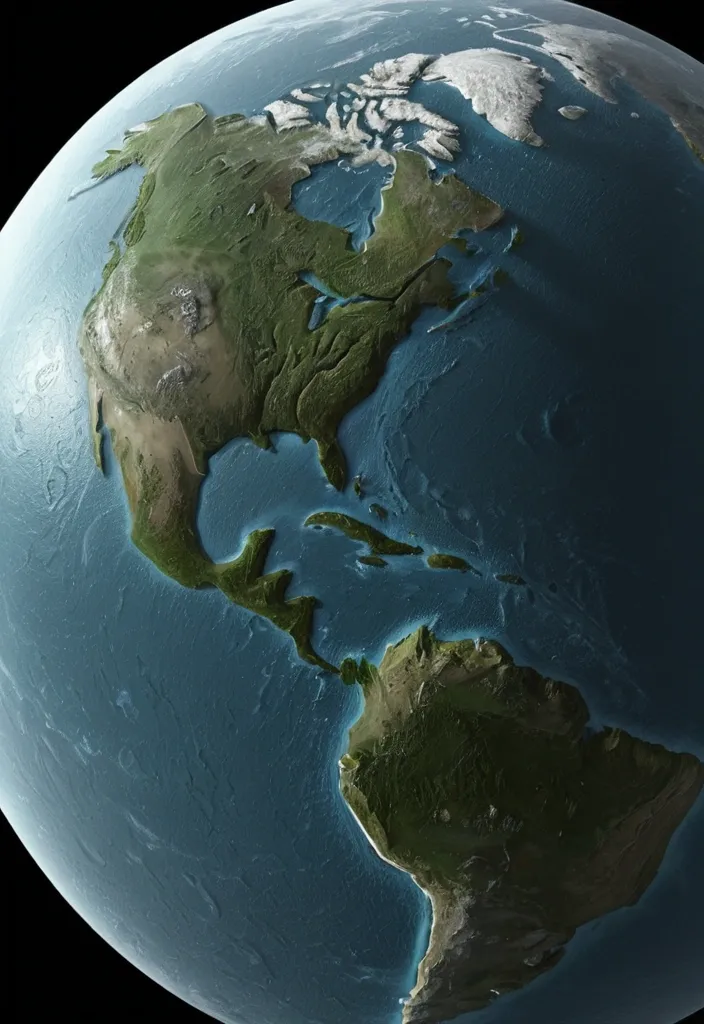
Render a realistic spherical planet that fills the frame , with fictional , non-Earth landmasses. The landmasses should be textured and colored based on the provided example images. Instead of oceans , leave all non-land areas as clean alpha transparency. The result should be a full 3D planet — not a flat map — with only the continents visible , and the rest of the globe fading into alpha where water would be. No stars , no space , no atmosphere , no background — just the planet on alpha ,
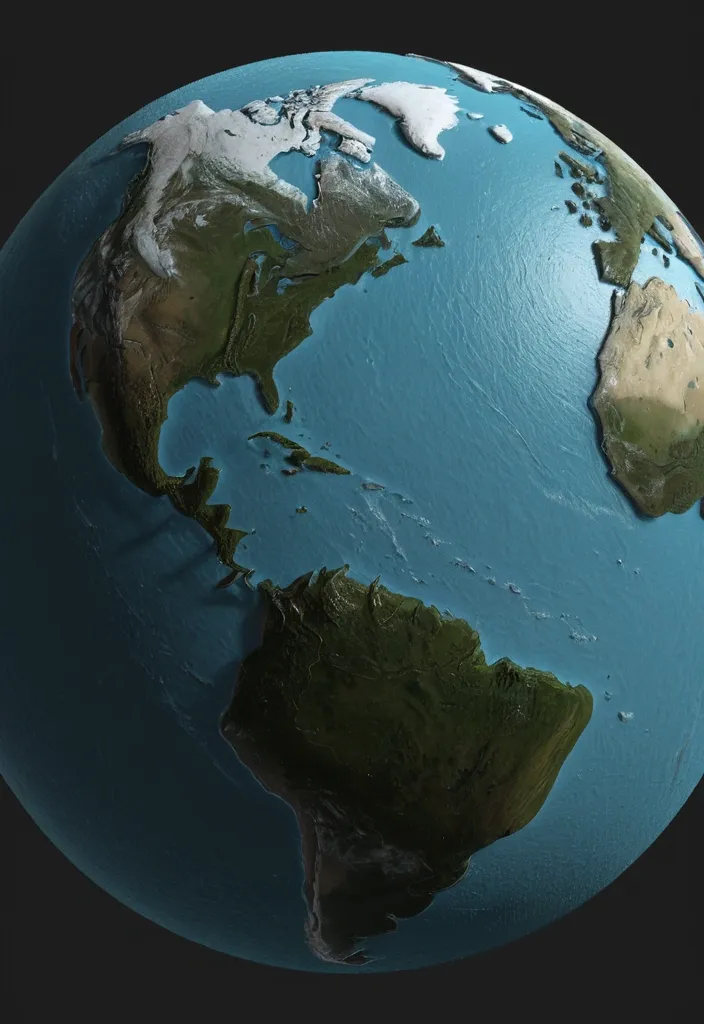
Render a realistic spherical planet that fills the frame , with fictional , non-Earth landmasses. The landmasses should be textured and colored based on the provided example images. Instead of oceans , leave all non-land areas as clean alpha transparency. The result should be a full 3D planet — not a flat map — with only the continents visible , and the rest of the globe fading into alpha where water would be. No stars , no space , no atmosphere , no background — just the planet on alpha ,
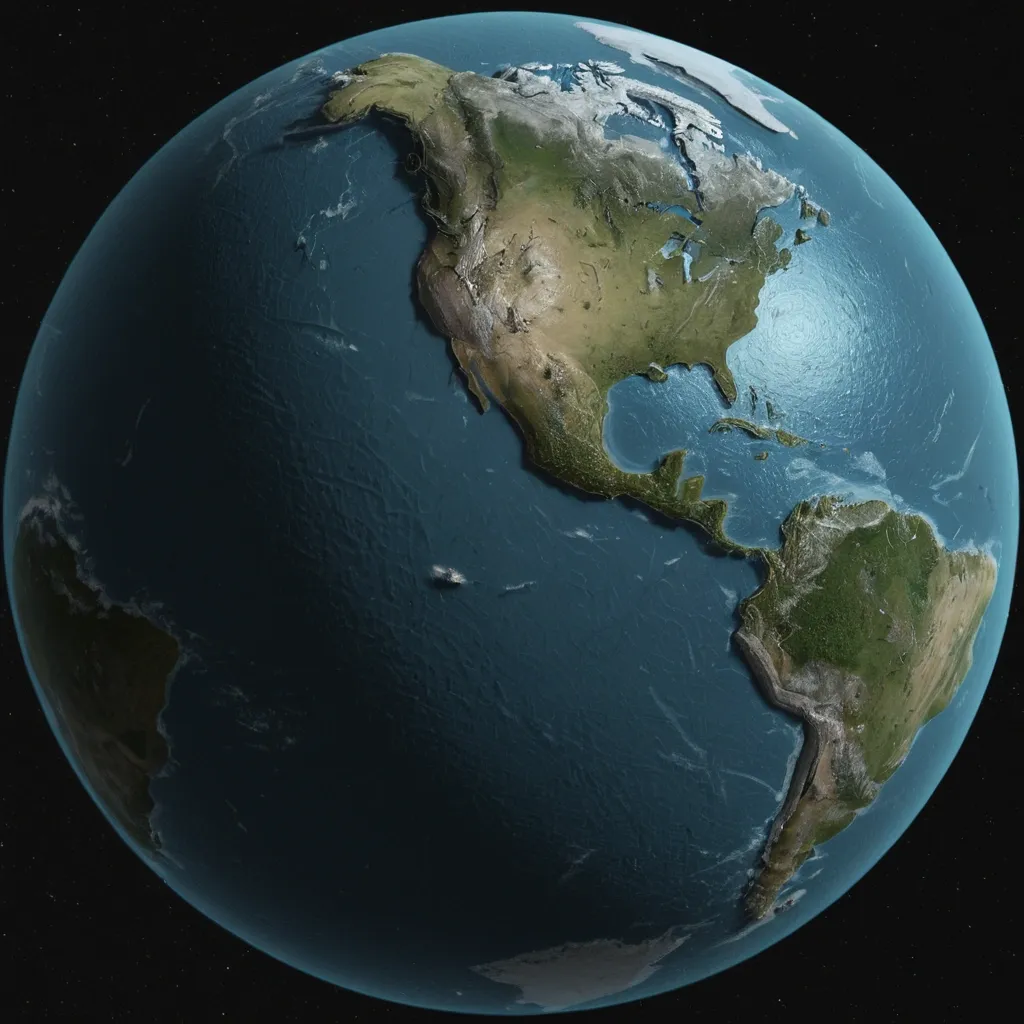
Render a realistic spherical planet that fills the frame , with fictional , non-Earth landmasses. The landmasses should be textured and colored based on the provided example images. Instead of oceans , leave all non-land areas as clean alpha transparency. The result should be a full 3D planet — not a flat map — with only the continents visible , and the rest of the globe fading into alpha where water would be. No stars , no space , no atmosphere , no background — just the planet on alpha ,
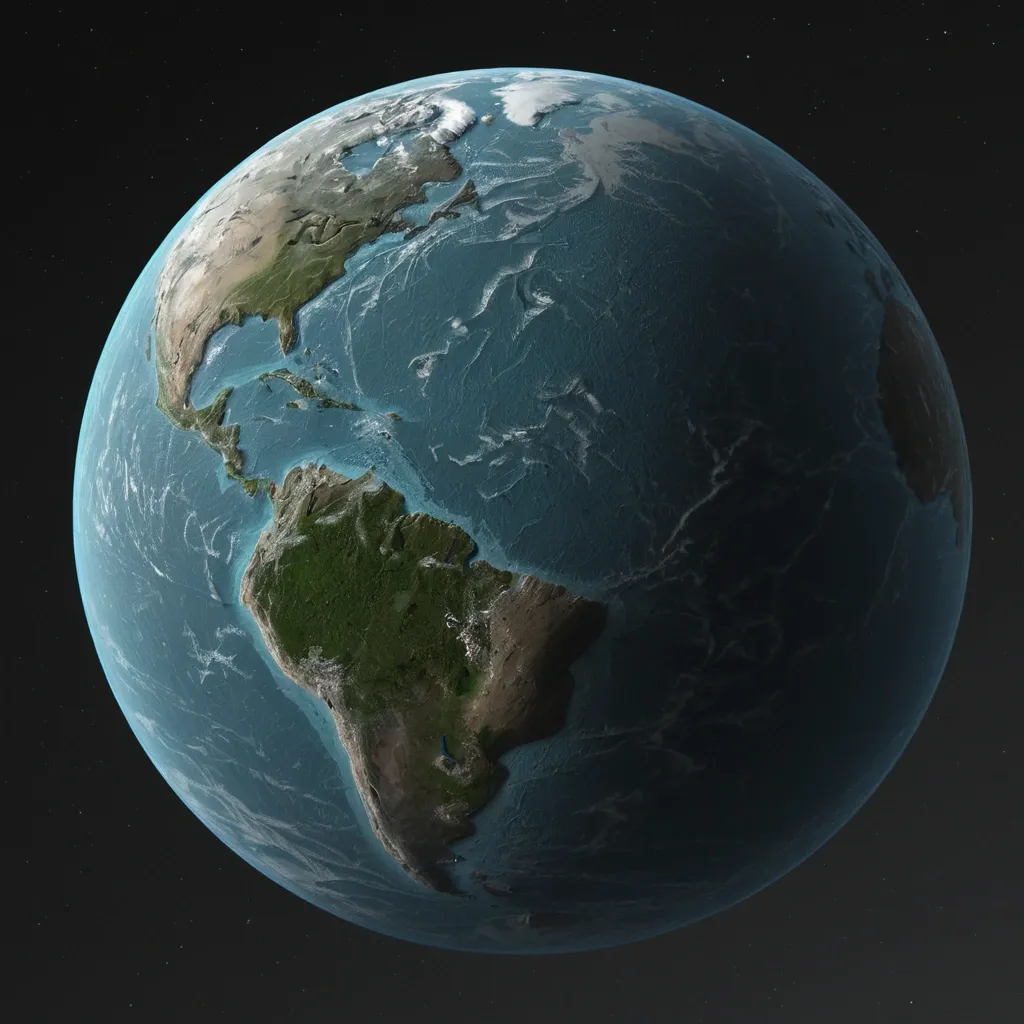
Render a realistic spherical planet that fills the frame , with fictional , non-Earth landmasses. The landmasses should be textured and colored based on the provided example images. Instead of oceans , leave all non-land areas as clean alpha transparency. The result should be a full 3D planet — not a flat map — with only the continents visible , and the rest of the globe fading into alpha where water would be. No stars , no space , no atmosphere , no background — just the planet on alpha ,
